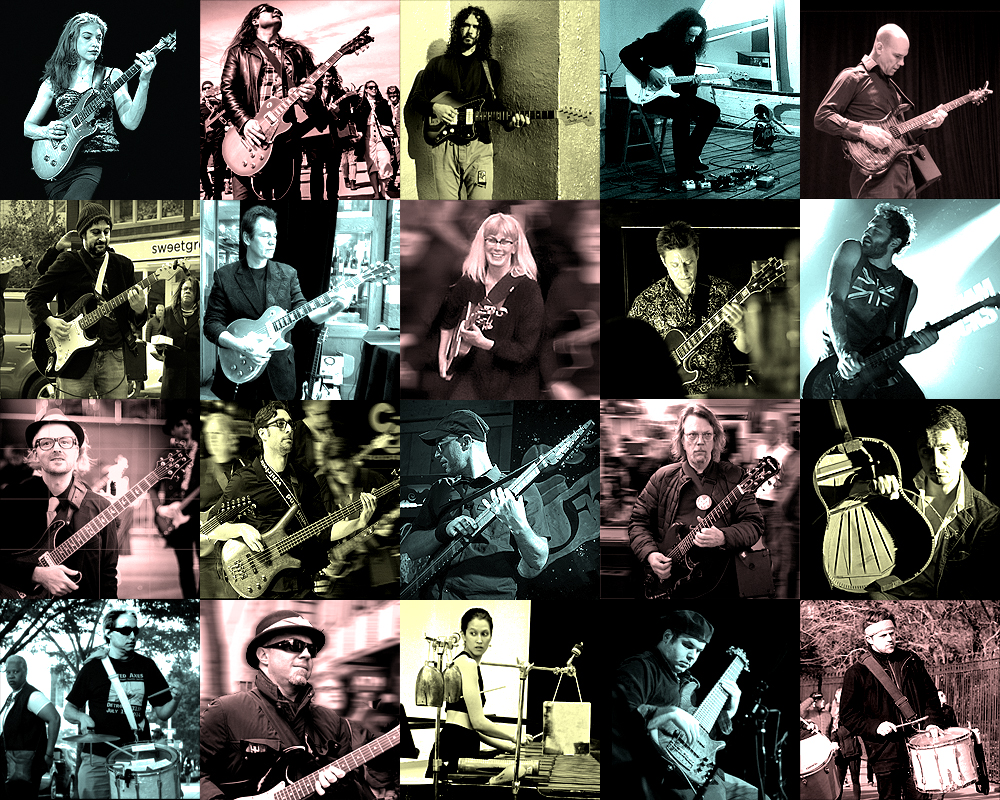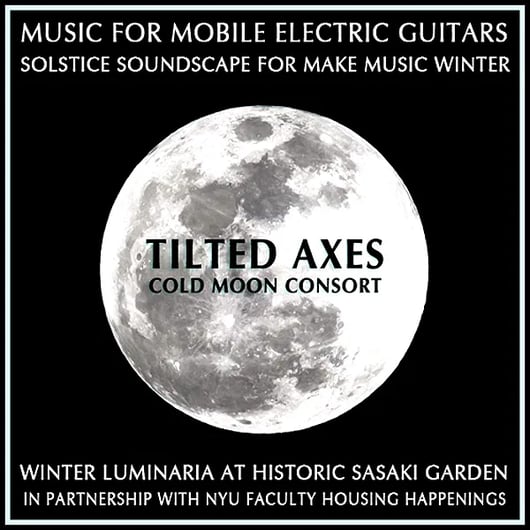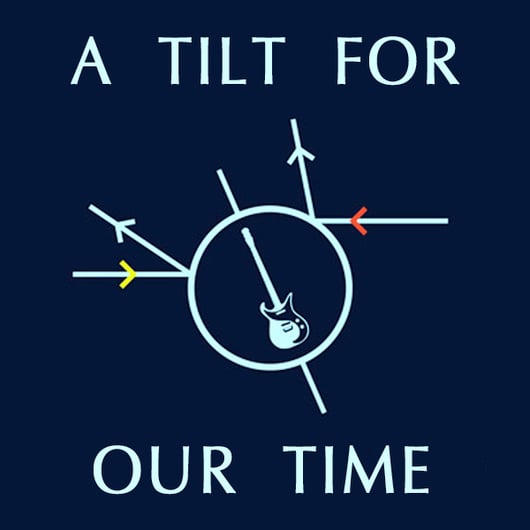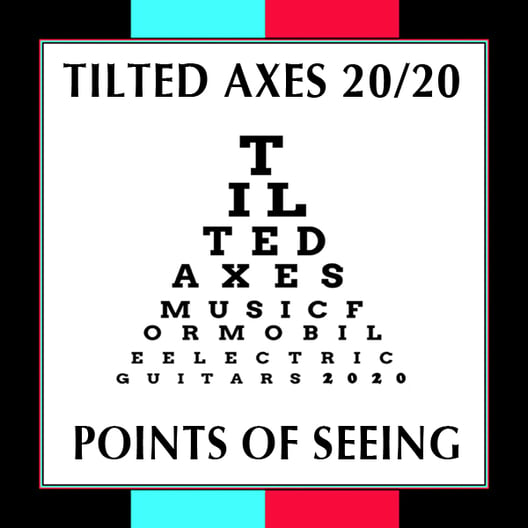Member Spotlight: Tilted Axes
Post-rock composer and guitarist Patrick Grant takes guitars out into the wild. Through Tilted Axes: Music for Mobile Electric Guitars, he brings together musicians to take to the streets of New York City and bring music to the public. With the help of battery-powered amps and inspired by his work as a composer and street theater musician, Patrick Grant uses free public music to help his audience share spontaneous moments of beauty and connection where they least expect it.

Tell us about your work or project. What inspired it and how do you hope it will impact people?
I created Tilted Axes: Music for Mobile Electric Guitars for the first Make Music Winter event in December of 2011. It is a musical procession of musicians untethered by the stage who can use the city as their backdrop. It’s electric guitarists, percussion, and other performers, most who wear portable, battery-powered mini-amps. That’s how we get our sound. It sounds really good.
The project is a culmination of my experience as a composer and performer for street theater for social change, my studies of communal music in Bali, Indonesia, and my experience as a musician [who is] equally versed in classical, rock, and avant-garde music and performance. Tilted Axes is a transformative project meant to change the conversation by drawing attention to the time and place we occupy. How we see the world changes the world. Since its inception the project has appeared in a number of cities over three continents.
Describe the process you've taken to bring your project to life. What's been involved?
I am the composer and music director of the project. Many people know me as a composer of contemporary classical, music for theater, film, and dance. I primarily played piano and keyboards, but Tilted Axes gave me an opportunity to get back to the electric guitar. I have never seen mobile electric guitars before so we are the first group to be known for this. I treat the ensemble like a small orchestra. We’re best when we play music that’s unexpected. Tilted Axes works best when it’s part of something bigger than itself so we’re often invited to perform for festivals, museum events, and the like. We can draw positive attention to our sponsors when we carve out a procession path in a busy urban area. That’s our secret: we go where there’s people, that’s our audience. Assistants pass out handbills with program info since most of the public wasn’t expecting us.
As an organization we’ve formed a structure over the years, roles that our players help fulfill. When we began I just put out a call to a bunch of friends to try it out. Now, we have paid players and a number of people in administrative roles. Soon after Tilted Axes’ first performances, I joined the Guitar Circle lead by Robert Fripp (King Crimson, David Bowie, etc.). They work with acoustic guitars but have been around since 1985, so I learn quite a bit from them regarding organization of an event that attracts people of all kinds. Over the years, Tilted Axes performances have become quite organized in terms of our rehearsal process, the promotion of our events, and the raising of funds and the finding of sponsors. We’re still learning, but we’ve reached a critical mass in the last 3 years that has kept our head about water especially in this most challenging of years.
What have been your biggest challenges with this project or with your work?
People who know me know that I often get frustrated when I have to explain the project to potential presenters and collaborators. I believe it’s because there’s not much to compare us to. I had hoped that our full name, Tilted Axes: Music for Mobile Electric Guitars would at least bring people halfway there in understanding what we are. I still get, “Uh, what is it you people do again?”
I have to get people to drop expectations and to listen to what we are proposing, usually something that will benefit them the most. The music we perform is instrumental and that can be a difficult thing for song people if it doesn’t fit neatly in a genre like jazz, because we don’t. We’re everything. We’re rock, classical, world, jazz, soundscape, avant-garde, you name it. Overall though, we’re engaging, inviting, and proceed with a sense of purpose like a secular ceremony. If I can just get people to give us a listen, see photos and videos of our positive public impact, that’s the biggest hurdle.
Yes, I know that when I put together all these electric guitars some people think that we’re going to sound like clichéd guitar noise. Oh no. We can aspire to beauty, too. We intended to elevate any situation we’re part of.
For you, what is the relationship between art and social change? How does your work fit into that relationship?
We aim to present what is possible. As artists, we need to communicate more than what we stand against or why particular policies affect us negatively, because limiting our commentary to such reactions would confine the social imaginary to existing political frameworks and systems that we do not control. We have to show a vision of what is possible. We should also present our vision for who we are, and show why that vision is a positive one. We can imagine and visualize a message that’s not necessarily only about action but more about shifting narratives and imagery. Art is central to social and political change, not peripheral. In the small things, we see the large things.
Tilted Axes is just a musical moment, we move the air, and poof! we’re gone. Through spectacle, music, words and visuals, our performances are tailored to a specific location or moment in time through a narrative we create. We create a situation that causes the public to stop for a second and pay attention to what is all around. For a moment we are all one, we see the same thing. And how we see the world changes the world.
What has been most useful to you about your Fractured Atlas membership? Which tools, resources, or services have you taken advantage of?
Fractured Atlas has been an incredible resource for us. However, one has to take advantage of it. That is, the regular articles we receive on opportunity deadlines, better ways to take advantage of social media, just the general news about what’s going on in our community are inspiring and keep our spirit up. The fundraising campaigns are clear in how they are created for our use.
Besides the raising of funds, it’s been a great way to keep track of our donors, to stay in touch with them, to keep them updated. It’s made the growing of our community easier to do and has enabled us to reach out to places and build our audience where we hadn’t been able to do before.
What was your first big win with Fractured Atlas?
That’s easy. That was December of 2018 when we were creating a show for Make Music Winter by NYU. The performance was called “Cold Moon Consort” because it fell on the December solstice full moon, the Cold Moon.

Even though we had a generous commission from NYU, an ensemble of our size (it varies between 18 to 24 musicians), still had our costs. First and foremost, we pay our players.
I decided it was time to truly go “all in” on a Fractured Atlas campaign. We had perks like t-shirts (people like our artwork, too), CDs, co-production credits and the like. We were all very surprised when we met and exceeded our goal. Also, it was easy to run while simultaneously putting together a show with rehearsals and all.
I owe that to the way the campaign is set up for Fractured Atlas members to use. That campaign showed us just how much love we had generated in the community over the years and it all came back to us when we needed it. That was when I saw how powerful it was when we were able to present ourselves in a fundraiser so well thanks to Fractured Atlas.
What advice do you have for other artists or organizations using Fractured Atlas services. How can they get the most out of it?
I don’t know if I can truly give advice, but I can tell you what has worked for us. Our organization is unique and has its way of doing things, but there might be a few things that people can relate to. I go back to a phrase I used earlier: we do what is possible. I stress that our performances are always given free to the public and we rely on the donors and organizations for our funding. Our overhead is lower than most organizations, but even so, when we appeal for funds we let the public know that we’re asking for very specific things that are easily quantifiable. We ask for honorariums for all our participants (number of players x $), funds for rehearsal space rentals (hourly rate x number of hours), materials (itemized batteries, printing, short guitar cords, etc.) cartage (taxi/car service for tech crew, and a couple of one-off fees for stage manager and seasonal admin. And that’s it, as transparent as possible.
I hear that people appreciate knowing where their donations are going. I make a big deal about thanking them each and every production: online, in print, and on the handbills we pass out at performances. I truly mean it when we call them co-producers, because they truly are. What they decide to fund determines the music we make. Fractured Atlas gives us all a platform to sustain and grow that relationship.
Any upcoming events that people should know about? What's next for you that we should be keeping an eye out for?
Yes! On Sunday, December 20, 12pm to 3pm EST: Tilted Axes: Music for Mobile Electric Guitars performs “A Tilt for Our Time”, a new music procession and socially distanced public action through Lower Manhattan. I will lead the group in a “tilt” from Greenwich Village to the East Village and back again with a ceremonial stop at the Astor Place Cube (The Alamo). Tilted Axes will present a program of new pieces created for the event along with classics from their catalog. Procession route and performance details TBA.

And then, on Monday, December 21, 7pm EST: Tilted Axes: Music for Mobile Electric Guitars presents “Points of Seeing”, an online presentation of new and recent work with live performance and a Q&A with the public.

I will host an event where members of the ensemble will discuss our past, present, and future work through music, visual art, and interact with a live audience. The presentation will focus on how Tilted Axes has adapted its creative process in the past year, what was learned, and a look ahead. Links to view or participate in the presentation will be announced in December, also to be found on our website.
Both of these events are made possible in part with public funds from Creative Engagement, supported by the New York City Department of Cultural Affairs in partnership with the City Council and administered by the Lower Manhattan Cultural Council (LMCC). “A Tilt for Our Time” is part of Make Music New York Winter NYC. “Points of Seeing” is produced by Peppergreen Media. Tilted Axes is powered by VOX Amps USA.
I hope you can be a part of the performances in December.
You can follow Tilted Axes on Facebook, Twitter, and Instagram. You can support their work on their Fractured Atlas fundraising page.
About Nina Berman
Nina Berman is an arts industry worker and ceramicist based in New York City, currently working as Associate Director, Communications and Content at Fractured Atlas. She holds an MA in English from Loyola University Chicago. At Fractured Atlas, she shares tips and strategies for navigating the art world, interviews artists, and writes about creating a more equitable arts ecosystem. Before joining Fractured Atlas, she covered the book publishing industry for an audience of publishers at NetGalley. When she's not writing, she's making ceramics at Centerpoint Ceramics in Brooklyn.
.png)

